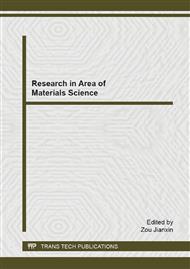p.189
p.194
p.199
p.204
p.209
p.214
p.219
p.224
p.228
The Utilization of Phenol Components in Bio-Oil for Modifying Urea-Formaldehyde Resin Adhesive
Abstract:
The components in bio-oil are mainly concluding organic acid, aldehydes and phenolics. As the irregular cracking of the pyrolysis, the products are complex and difficult to separate. A comprehensive concept was presented and the extractions from bio-oil were used for modifying urea-formaldehyde (UF) resin in this study. Characterization by FT-IR and GC-MS indicated that the reaction mechanism. Phenol-oil addition amount and particle boards test were investigated resulted those 10% phenol-oil shows the best properties: viscosity of 73.36 mm/s, solid content of 52.25% and pH of 8.35 and the best pressing condition is 125°C for 5min which produce a 1.23MPa bond strengthen and 1.05 mg/L formaldehyde emission plywood.
Info:
Periodical:
Pages:
209-213
Citation:
Online since:
April 2015
Authors:
Keywords:
Price:
Сopyright:
© 2015 Trans Tech Publications Ltd. All Rights Reserved
Share:
Citation:


